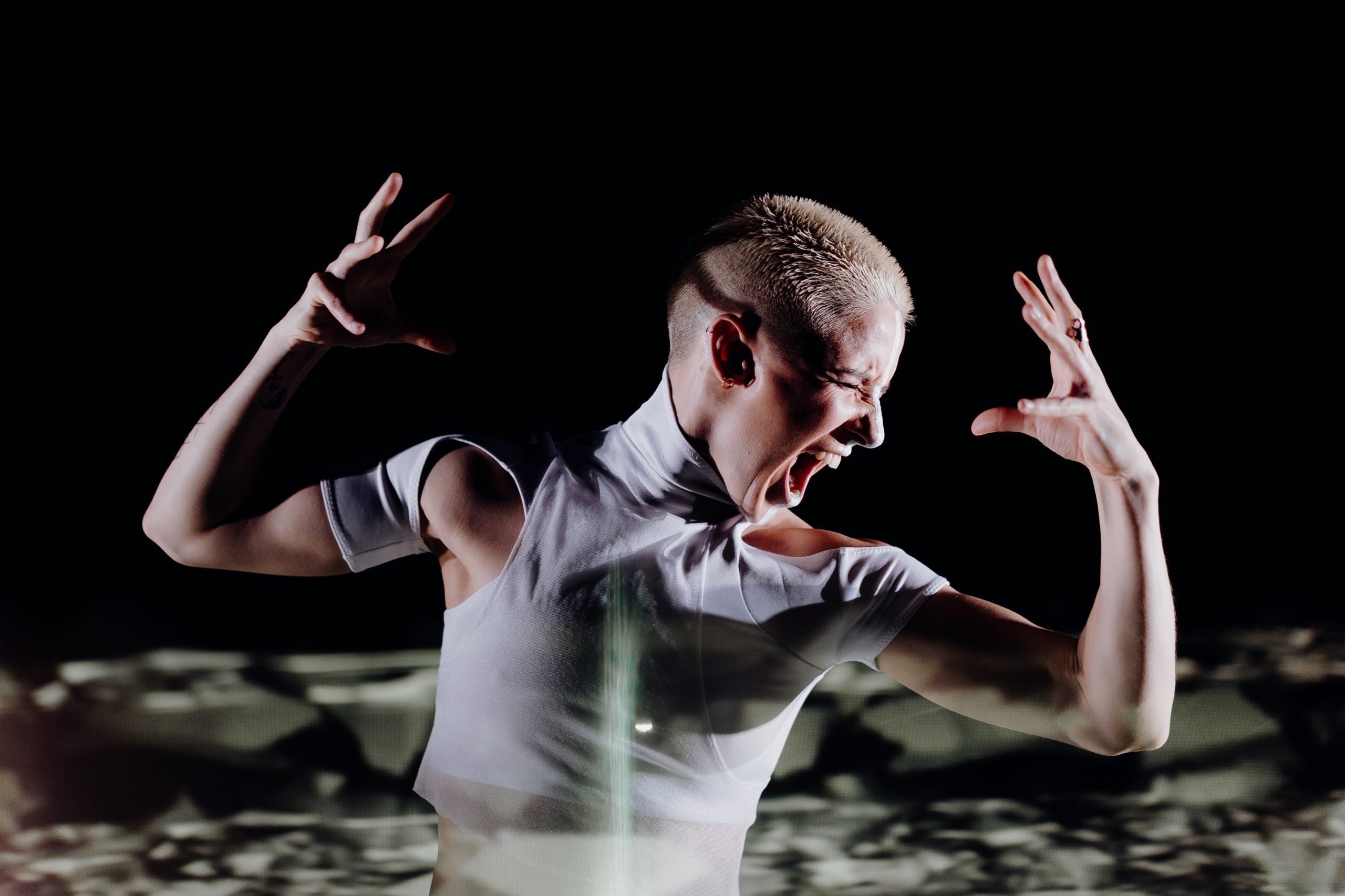Words by Josephine Leask.
Jemima Brown walks calmly through an intense crossfire of laser beams. Projected from all around the stage they briefly scan the auditorium then track Brown, highlighting segments of her body as she moves. Smoke reacting to the light creates dense layers of colour and plays tricks on our vision so that Brown appears to be partially submerged. Surge, directed by Tom Dale, features Brown as an extraordinary robotic presence amidst Barret Hodgson’s dazzling digital landscape with sensational new music by ITAL TEK. The immersive aspect of the work celebrates digital sophistication and Brown’s extensive capabilities as a dancer.
Surge reveals the body and light in a complex duet that pits the human body against the digital, testing the limits of both. What is fascinating is how Brown unfazed, remains in control throughout, like an avatar effortlessly gliding through a computer game, or some sci-fi world. She keeps her cool as a deluge of light traps her, yet offers new kinaesthetic possibilities both spatially and visually. Octagonal spotlights or effervescent corridors suddenly appear, pixilated patterns emerge only to be replaced by solid blocks of colour in an acrobatic son et Lumiere. Sometimes she initiates the choreographic interplay between body and light, at other times follows its fleeting trajectory. Brown articulates gesture and action with speed and precision. Her relaxed, ultra-fluid style, make her look beyond human. Pulling herself up vertically or cascading into the floor she moves like a body without bones or organs, tapping into a palette of seamless releasing and popping.
Brown takes on the challenging task of singing live while dancing with the ease of a humanoid pop star but with more nuance. Here she touches us with her organic vulnerability as her voice, both hauntingly melodic and melancholic, evokes the loneliness of a body stuck in a matrix. Finally, the faultless digital system (intentionally) crashes: lights flash crazily out of synch making floor patterns fracture and disintegrate. Flickers of panic cross Brown’s face as she navigates the dissolving digital terrain. Relentlessly stimulating, Surge is terrifying and stunning, prompting questions about human survival in the emergent world of AI.
Sub:Version follows, performed by four members of Dale’s company. This time WEN’s experimental club music from the album EPHEM:ERA and a warmer, pulsing lighting scape by Andrew Ellis set a different tone. Here Dale and dancers envisage a more earthy, human realm than a virtual one. Real people meet each other on a dance floor in a series of riveting conversations which ooze with a clubby vibe. Dan Baines, Tom O’ Gorman, Meghan Stevens and Brown embark on a series of ten distinctive dances. As they assemble in different combinations and pairings the mood is transient and fleeting. No one lingers too long with any particular partner, they peel off then return alone, creating a physical landscape of constantly shifting forms. While the performers’ faces are expressionless and their body language cool, we see glimmers of pleasure in their interactions, an occasional touch, or an exchanged glance.
The hypnotic dance tracks of electronic music flow and seem to suspend the dancers in perpetual, laid-back motion, each sequence merging fluidly into the next. Yet again their chilled presence is deceptive, as Dale’s choreography is demandingly complex and requires stamina and edge together with loose-limbed softness. Whether spinning on the vertical, or horizontal on the ground they work with depth and volume into the space, appearing weightless yet grounded. It’s exciting to see these young dancers literally floating through the heady ambient setting of Sub:Version.
Sync a new work by Scatter Dance Company, The Place’s adult dance company, serves as a welcome curtain opener ahead of Surge and Sub:Version. The company fill the stage with dynamic female bodies, performing choreography that’s free from digital invasion or robotic dynamics. Created by James Kay, the work features imaginative material, which looks particularly impressive when performed in unison.
